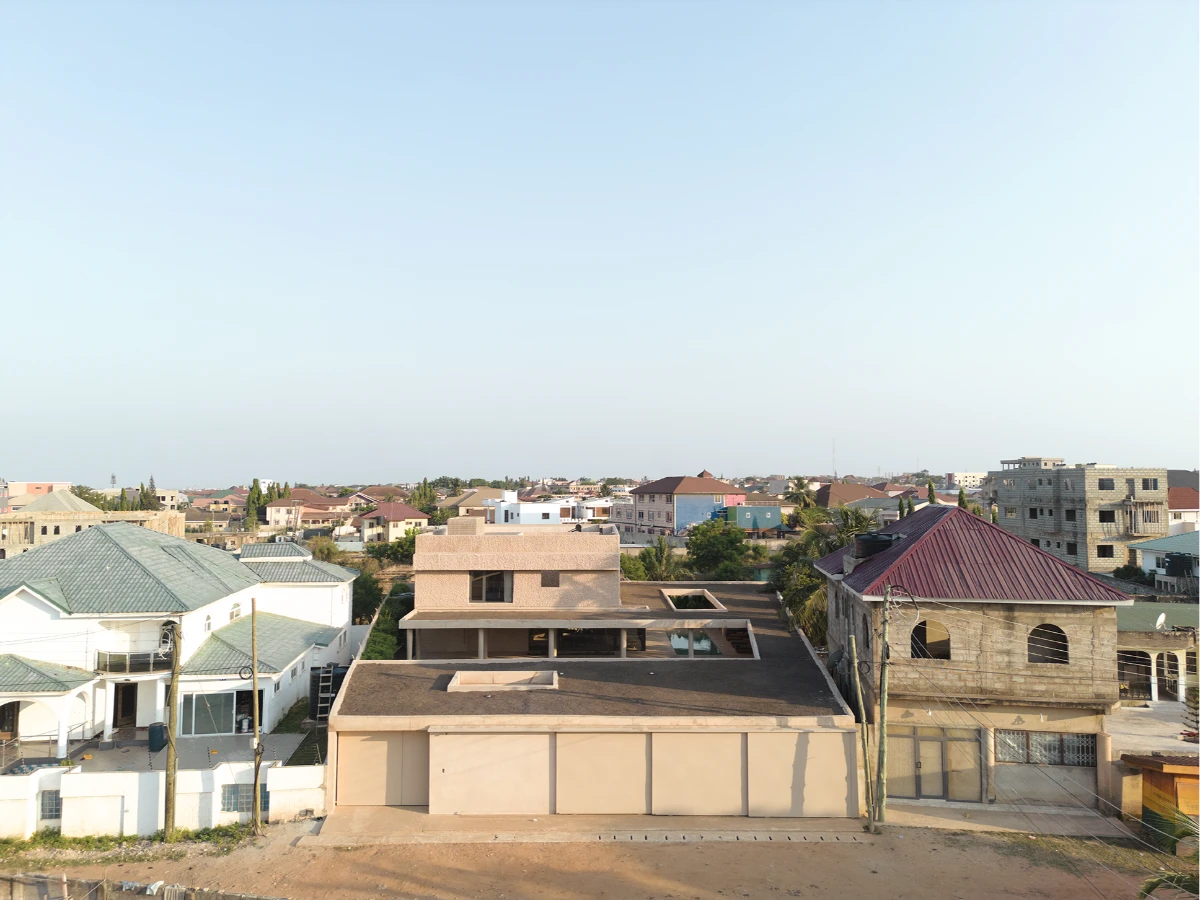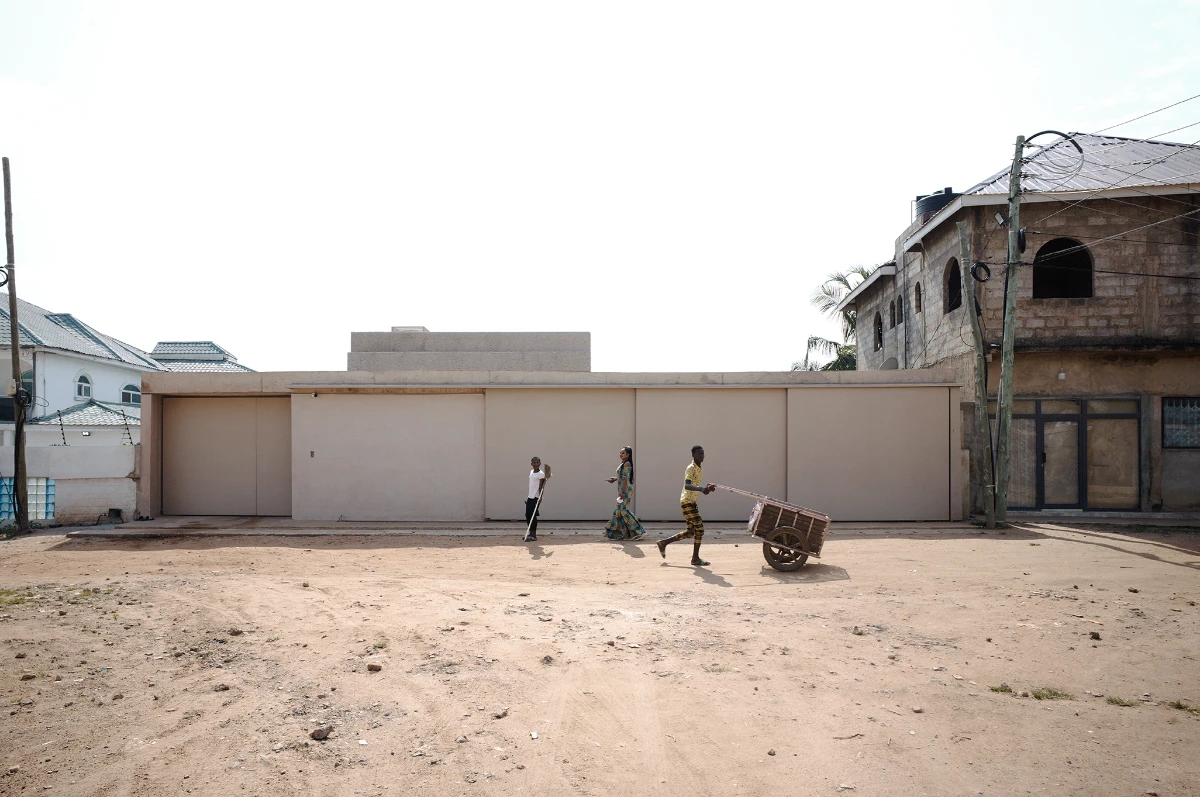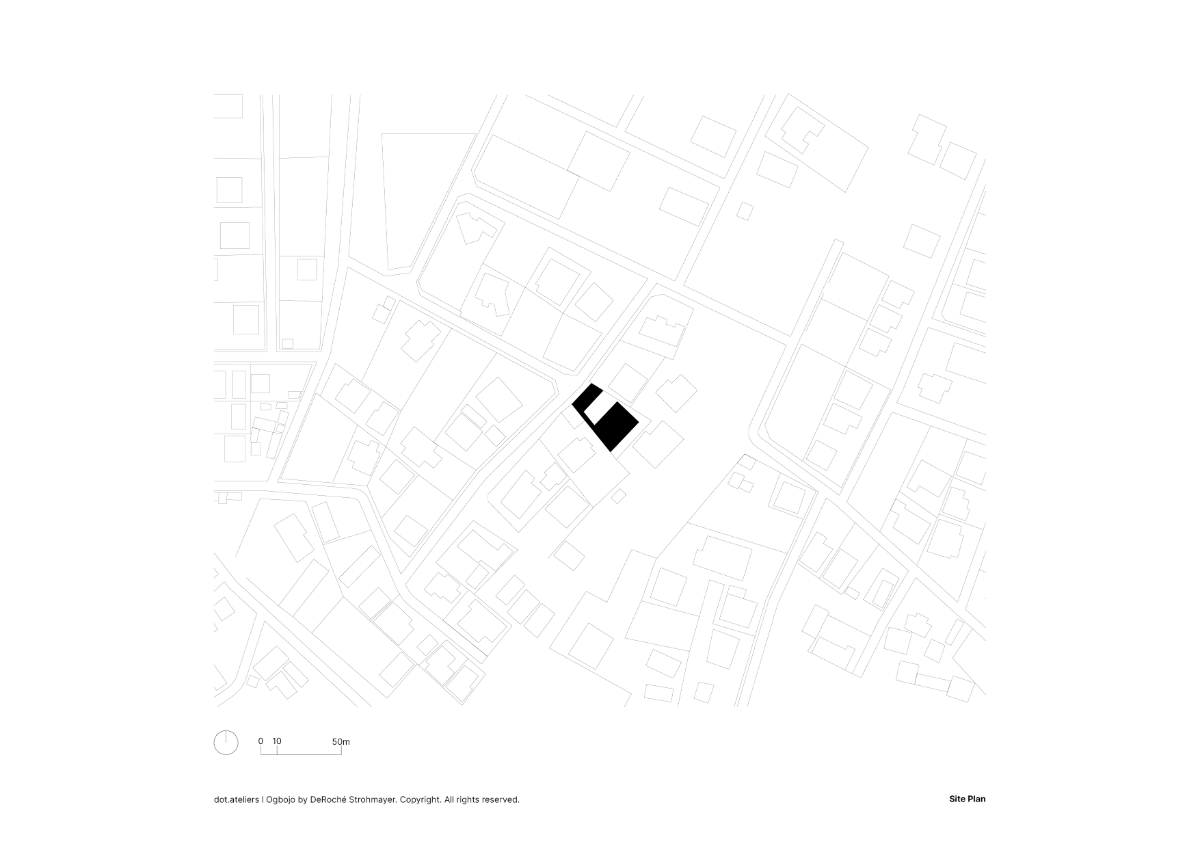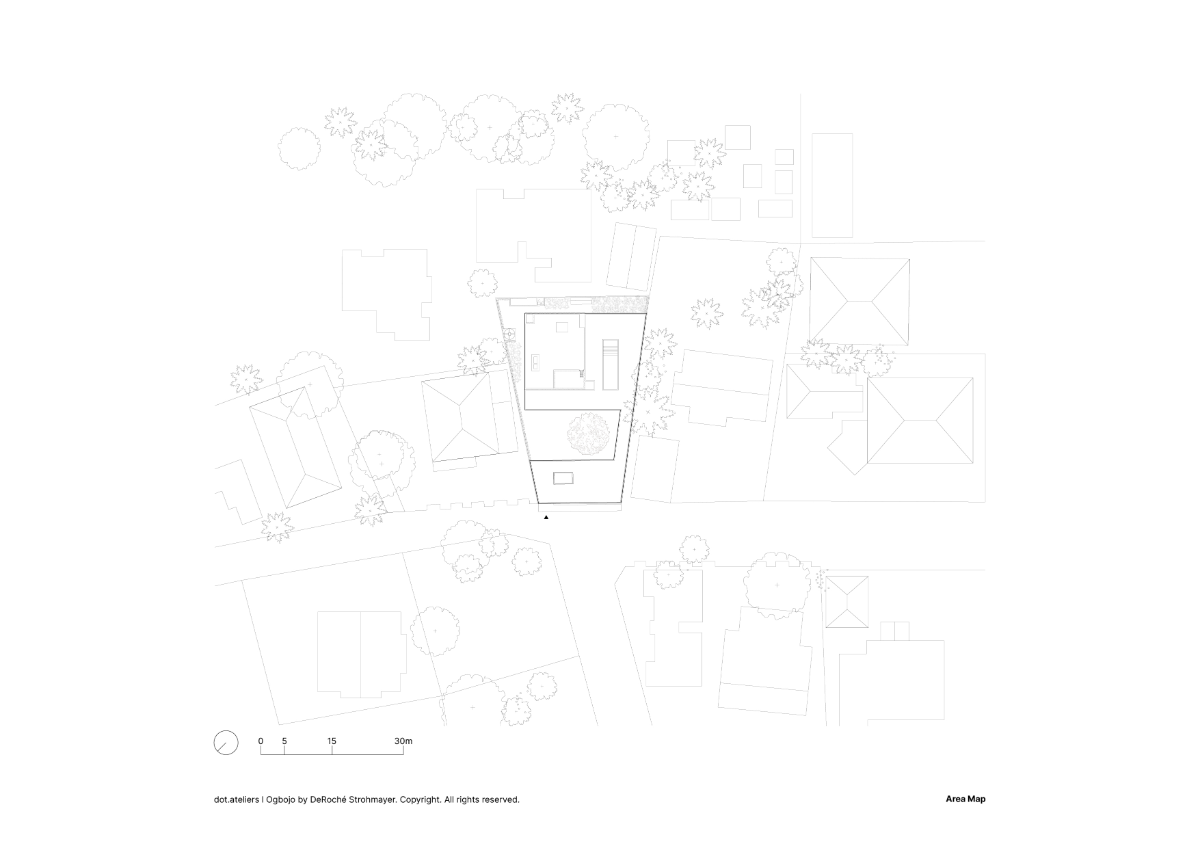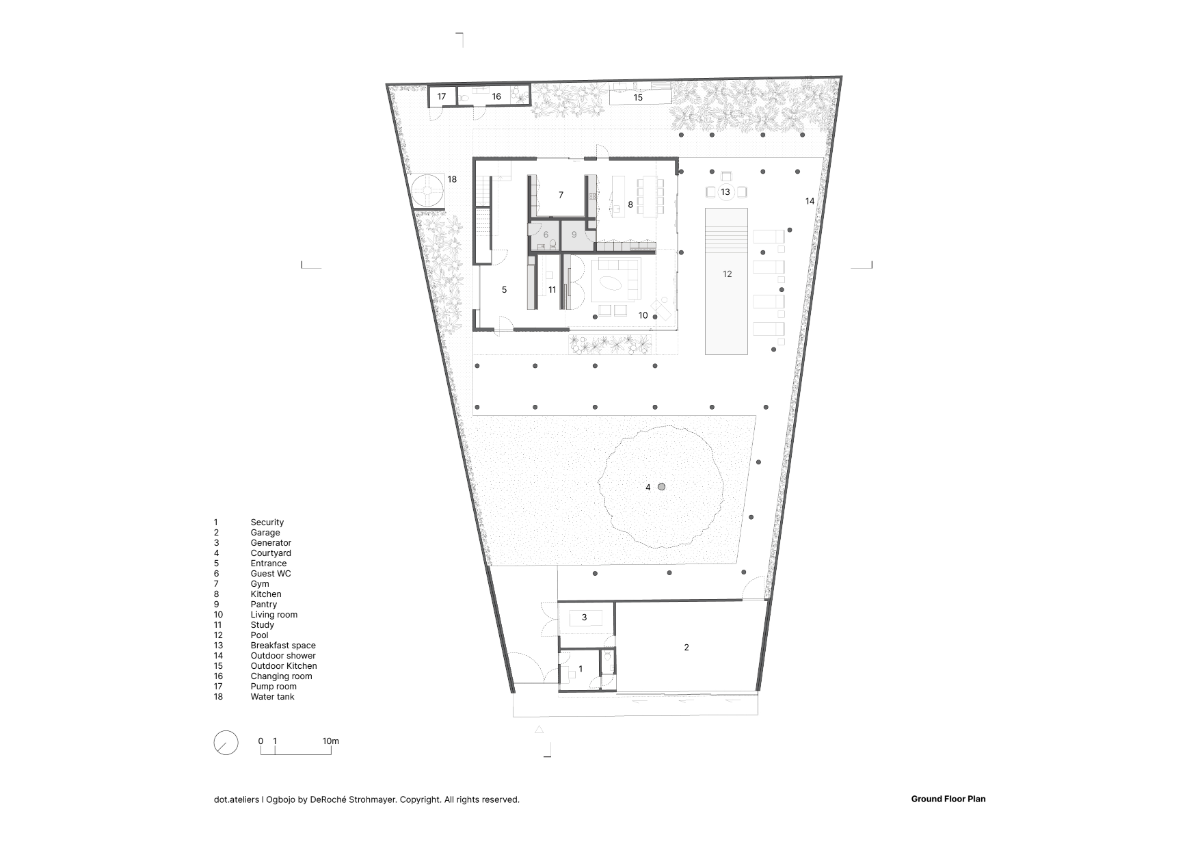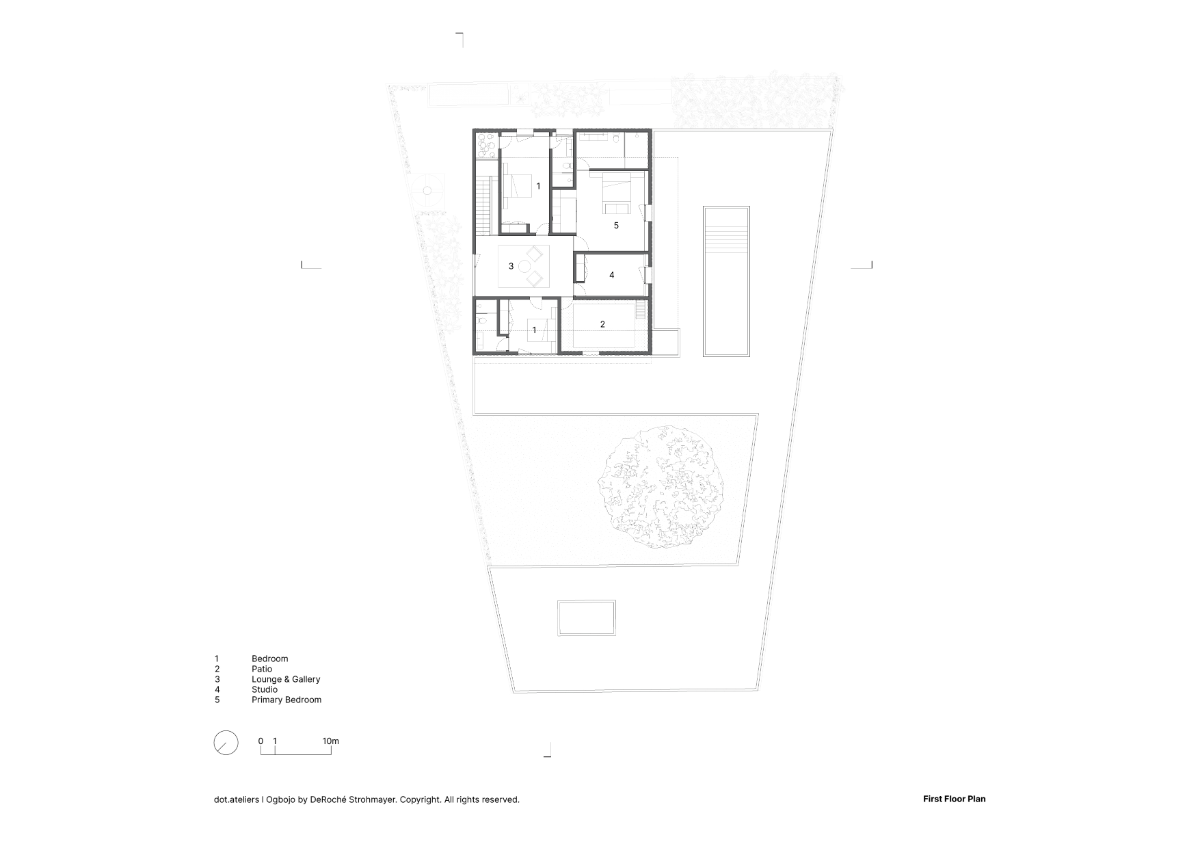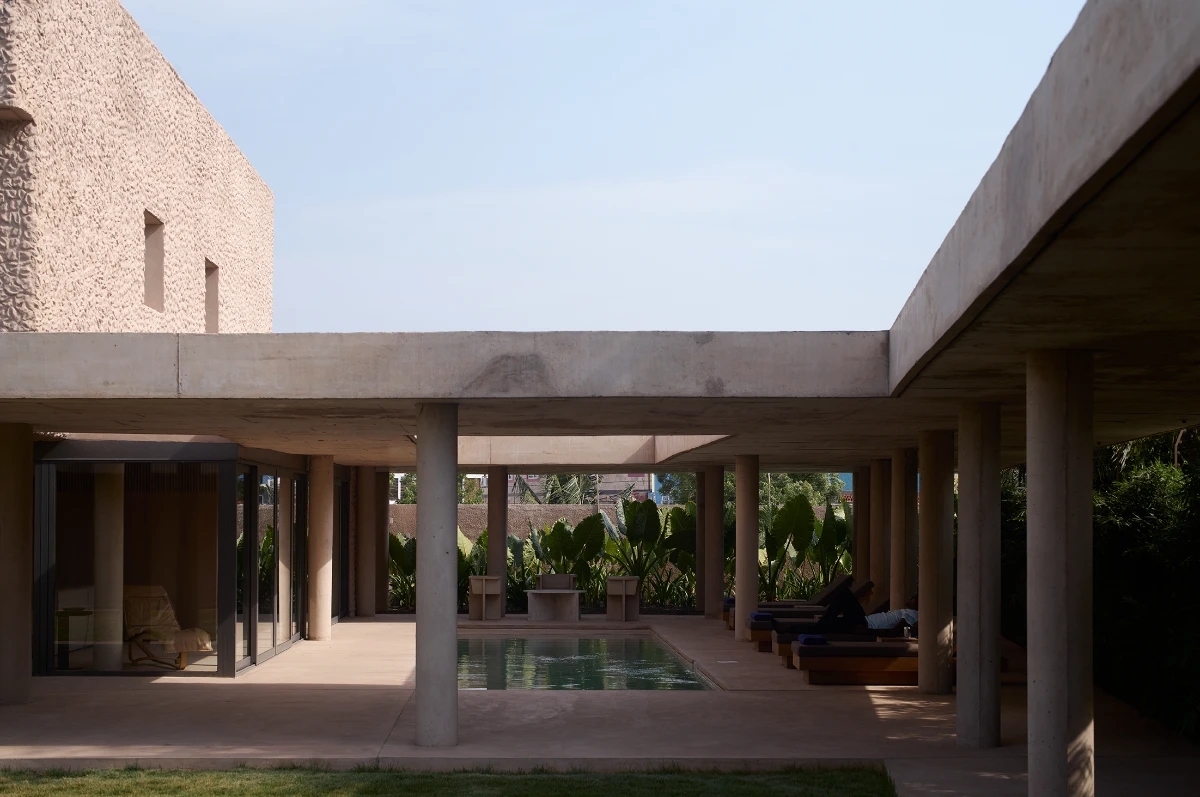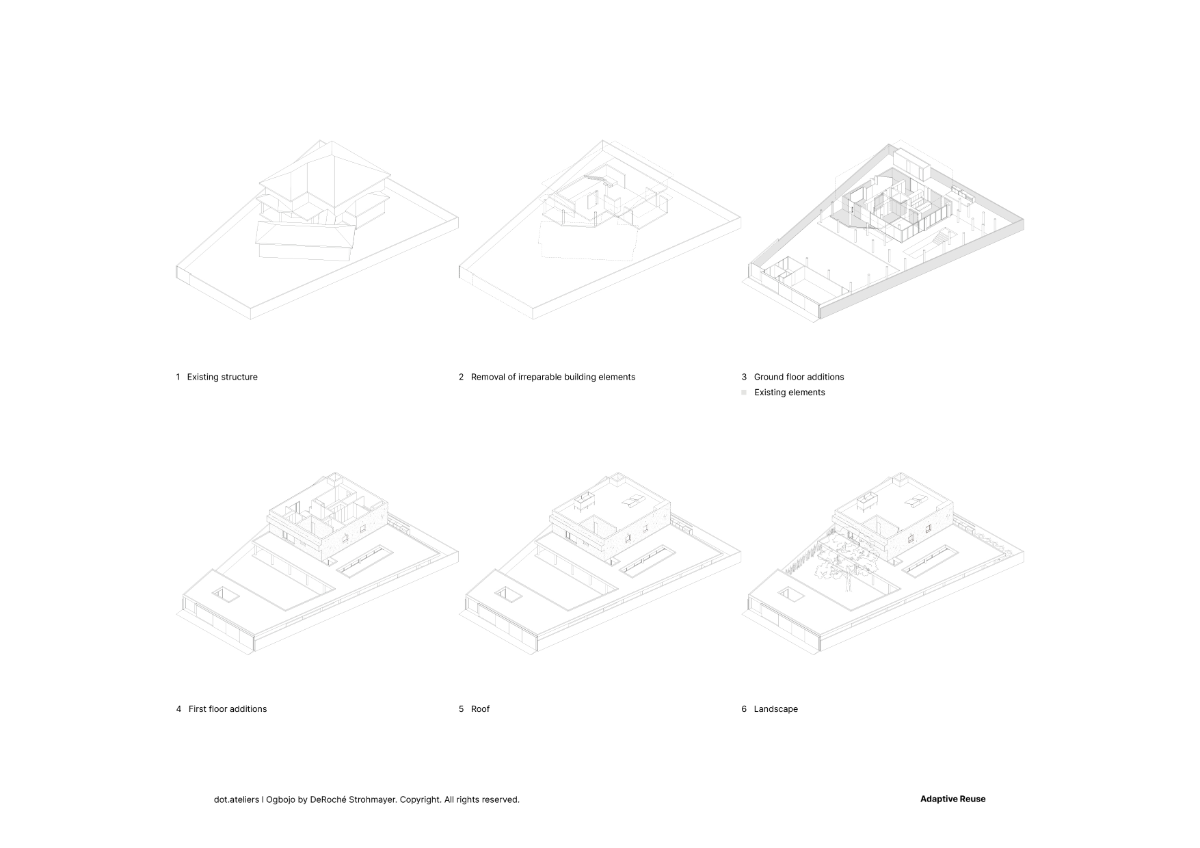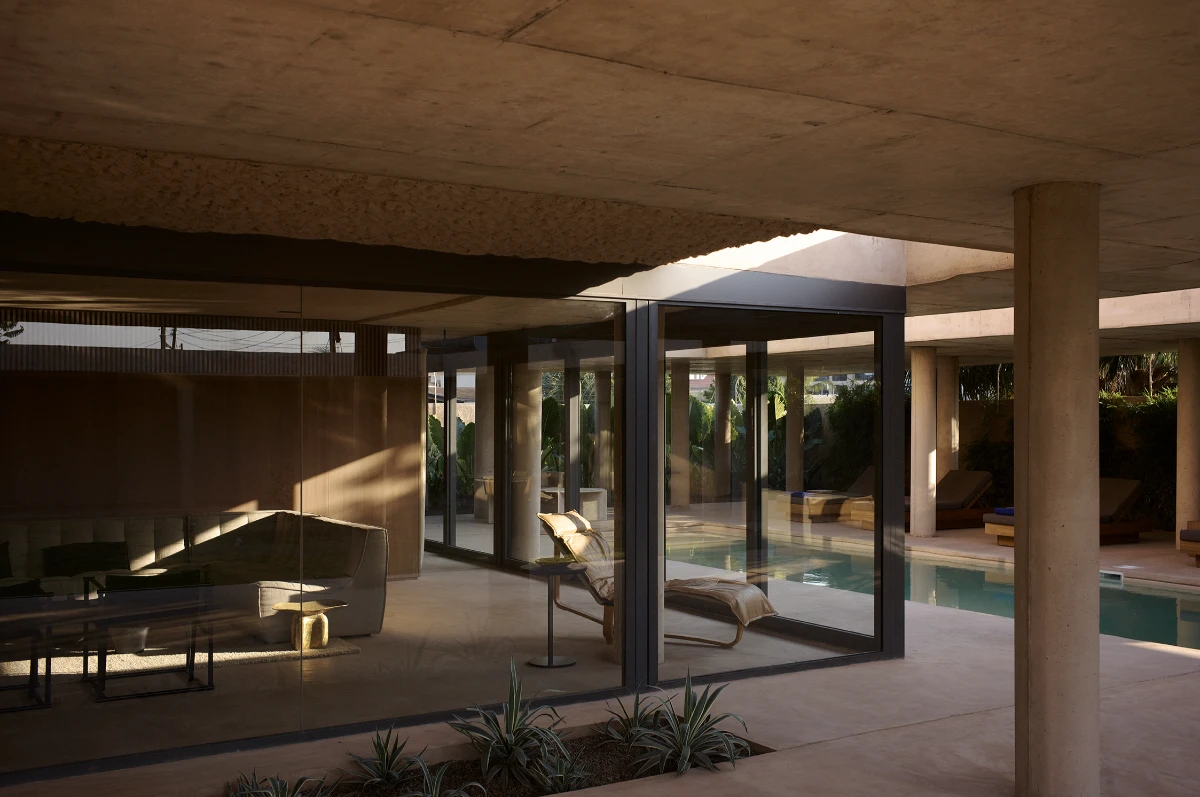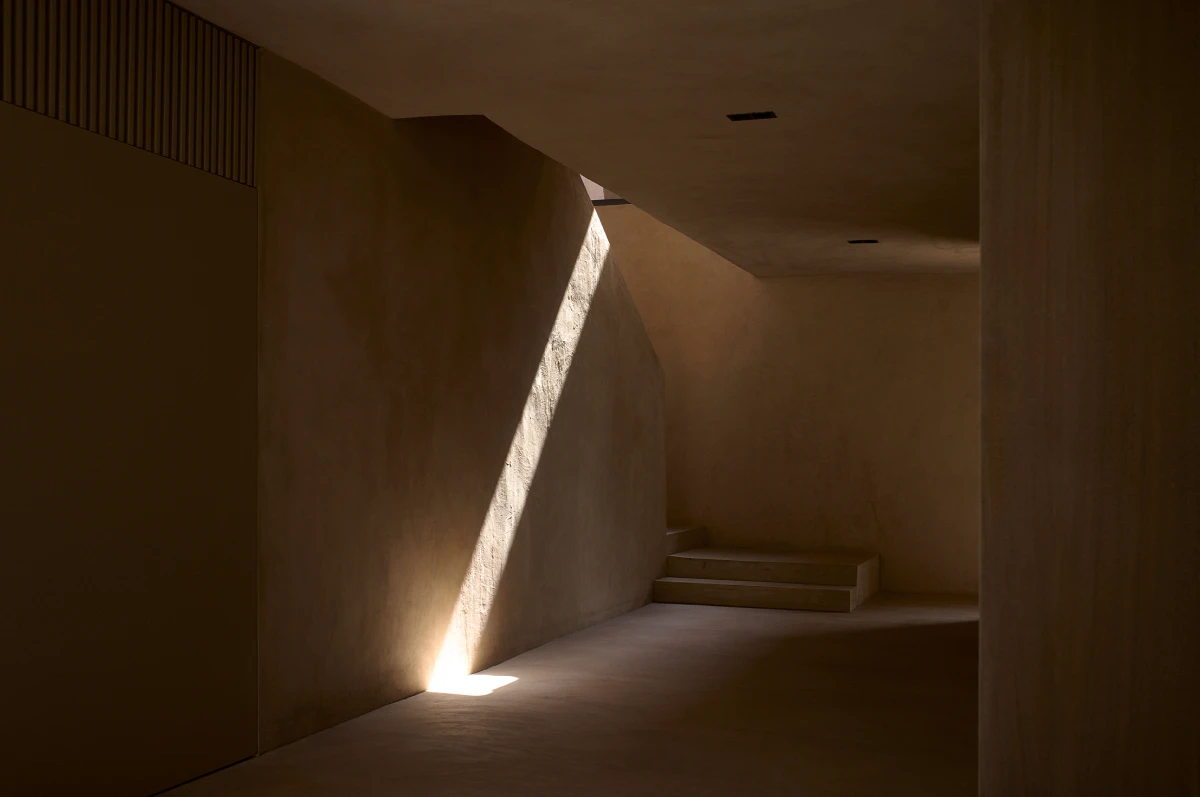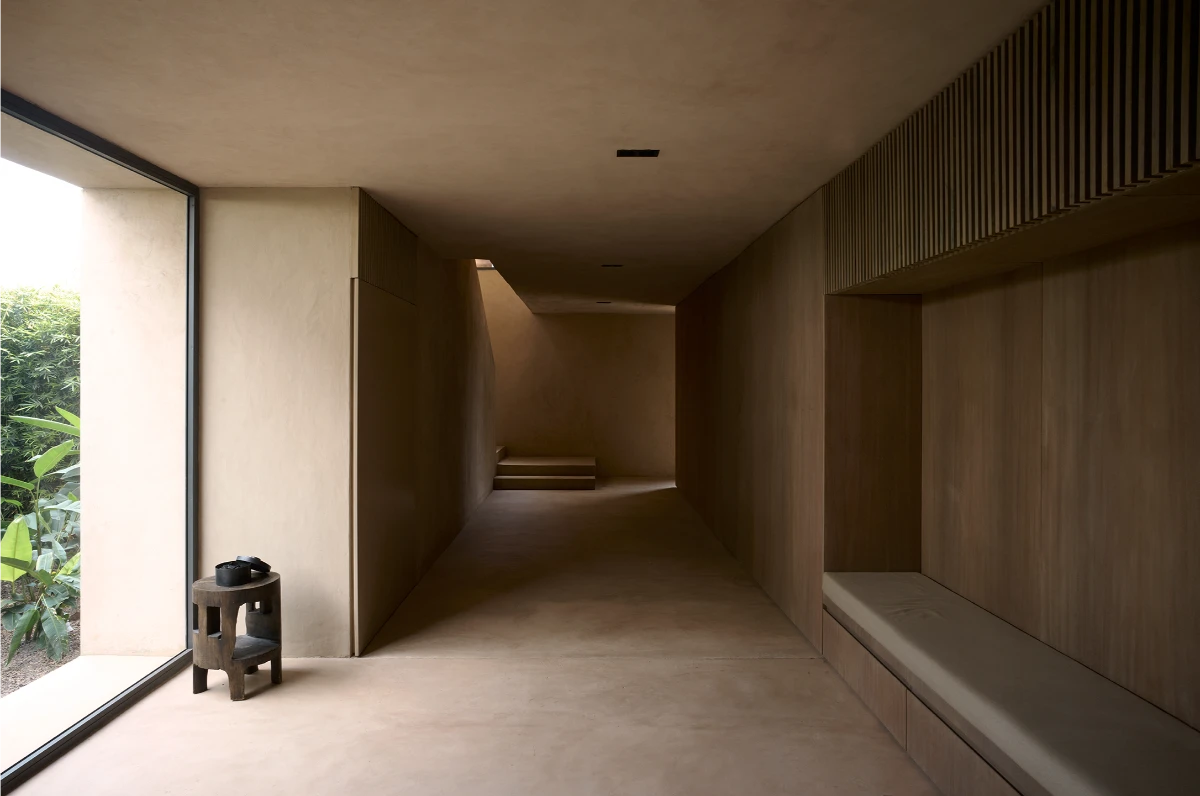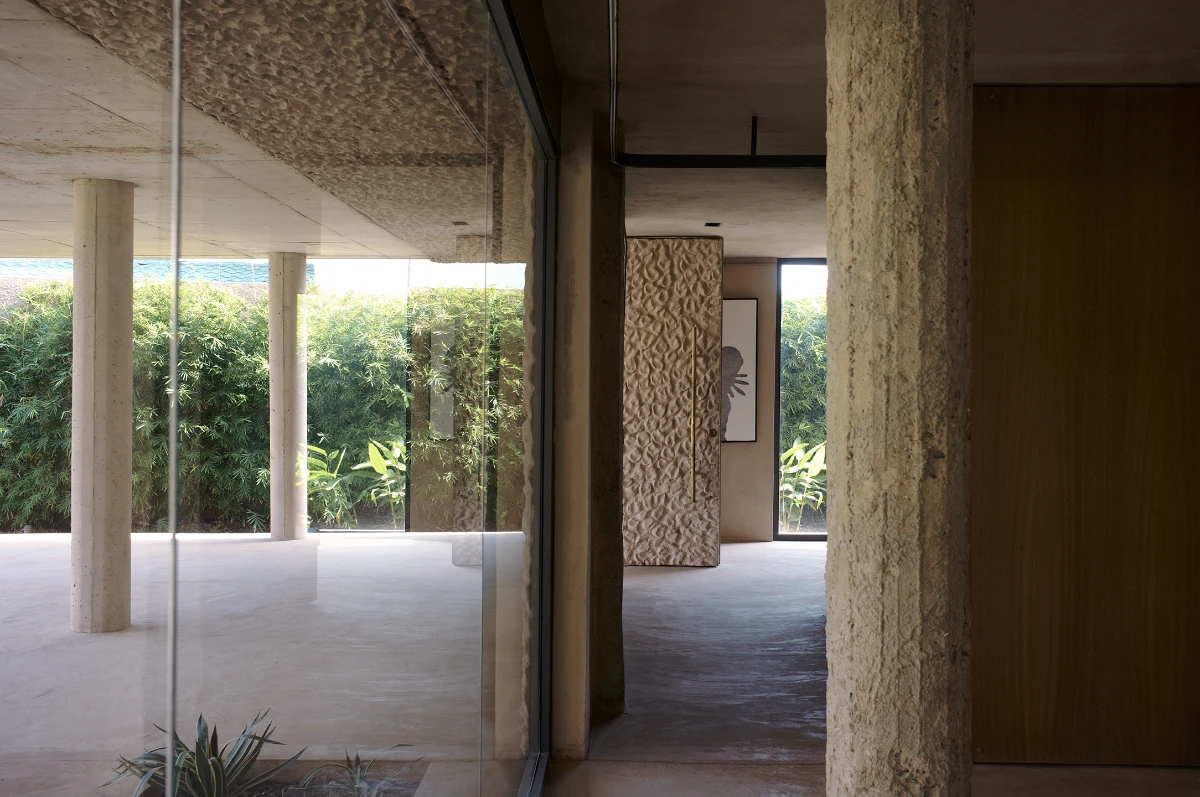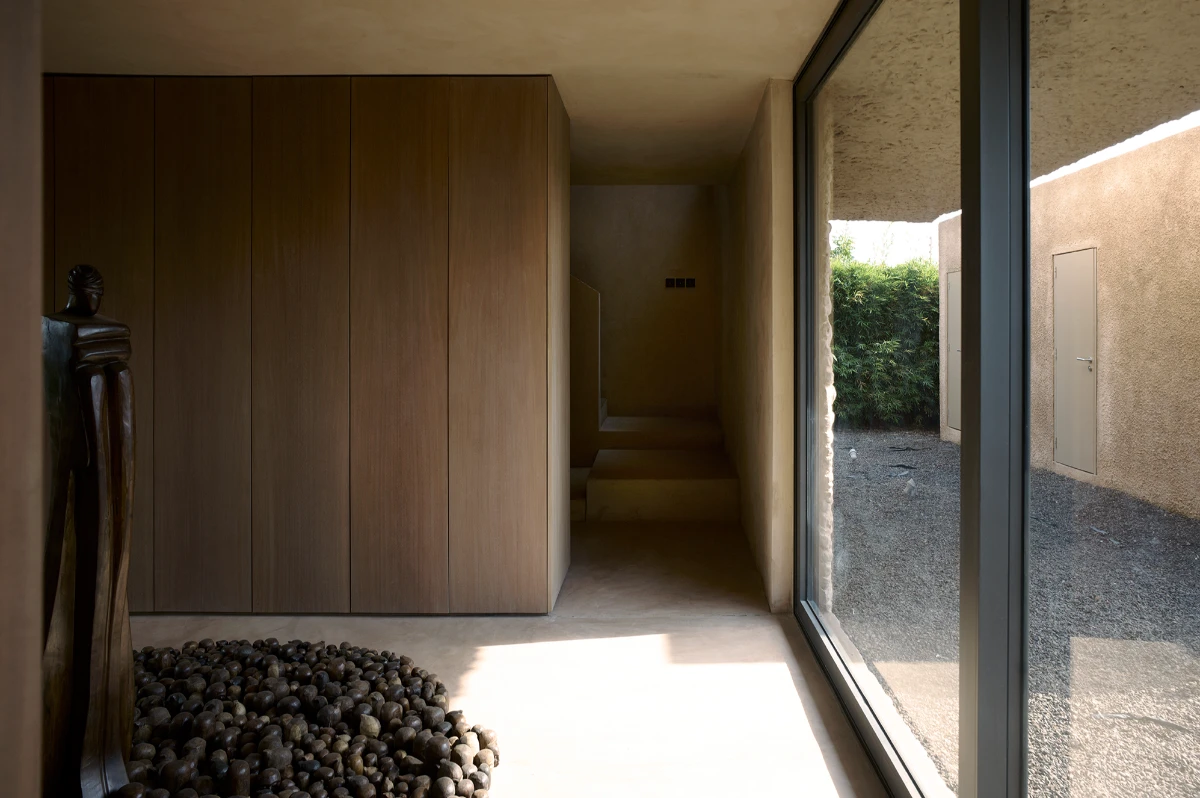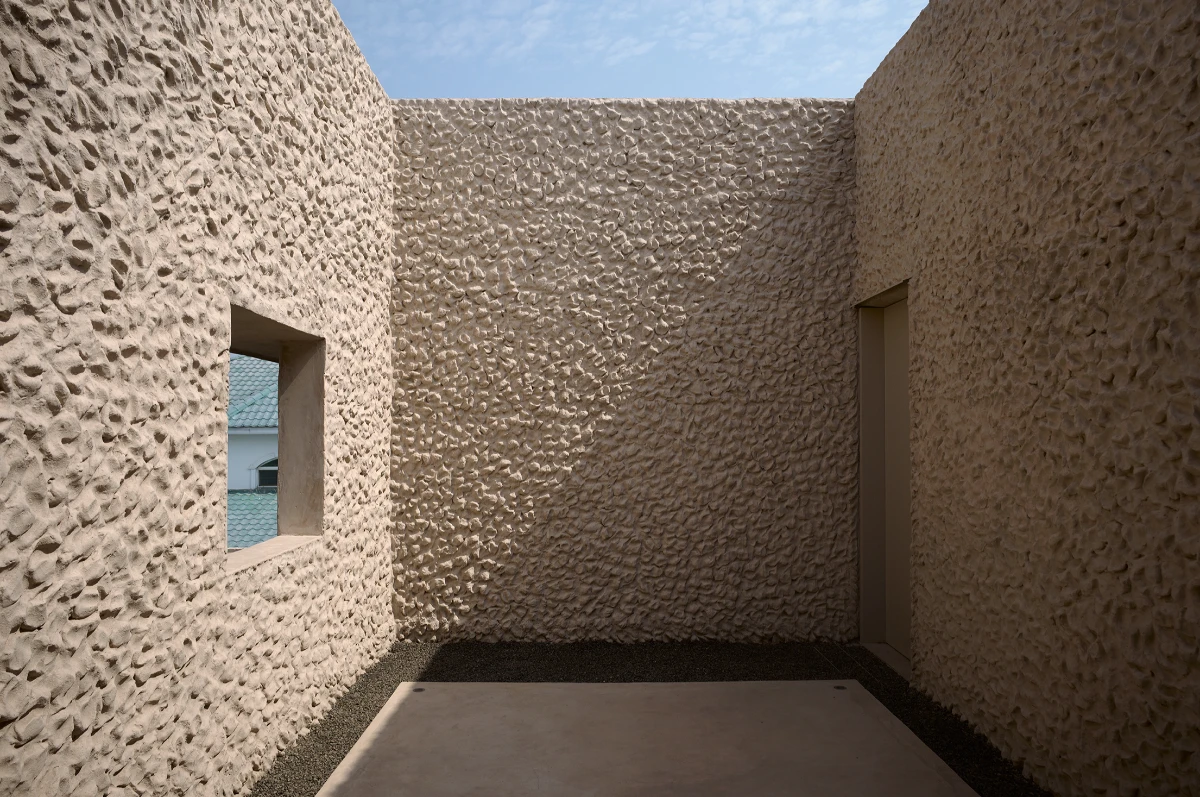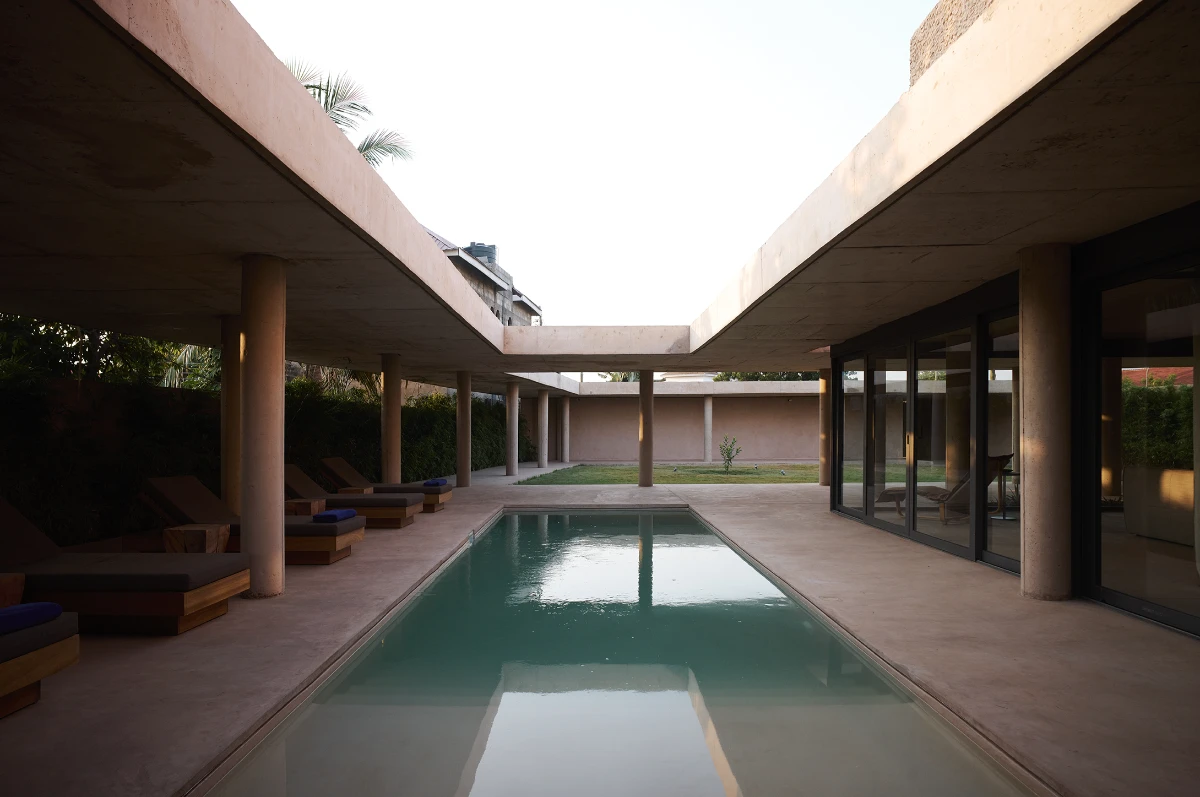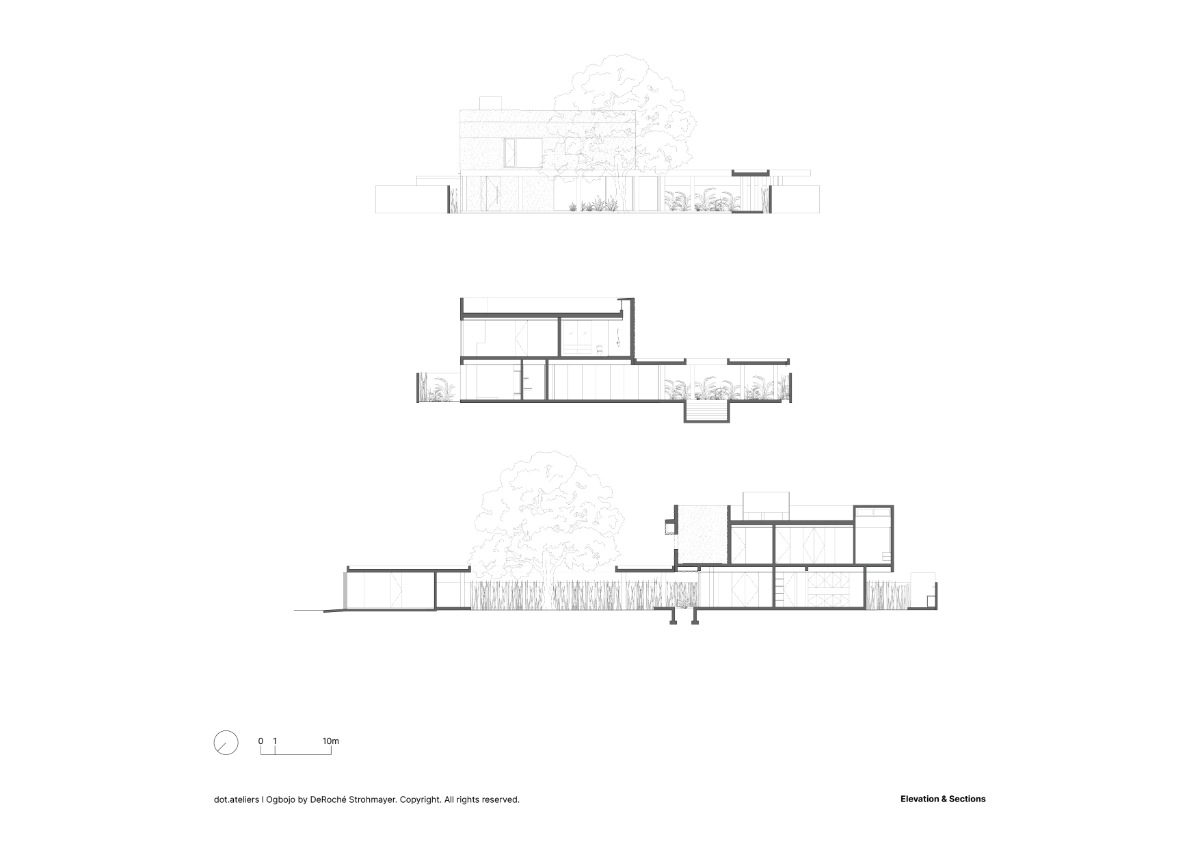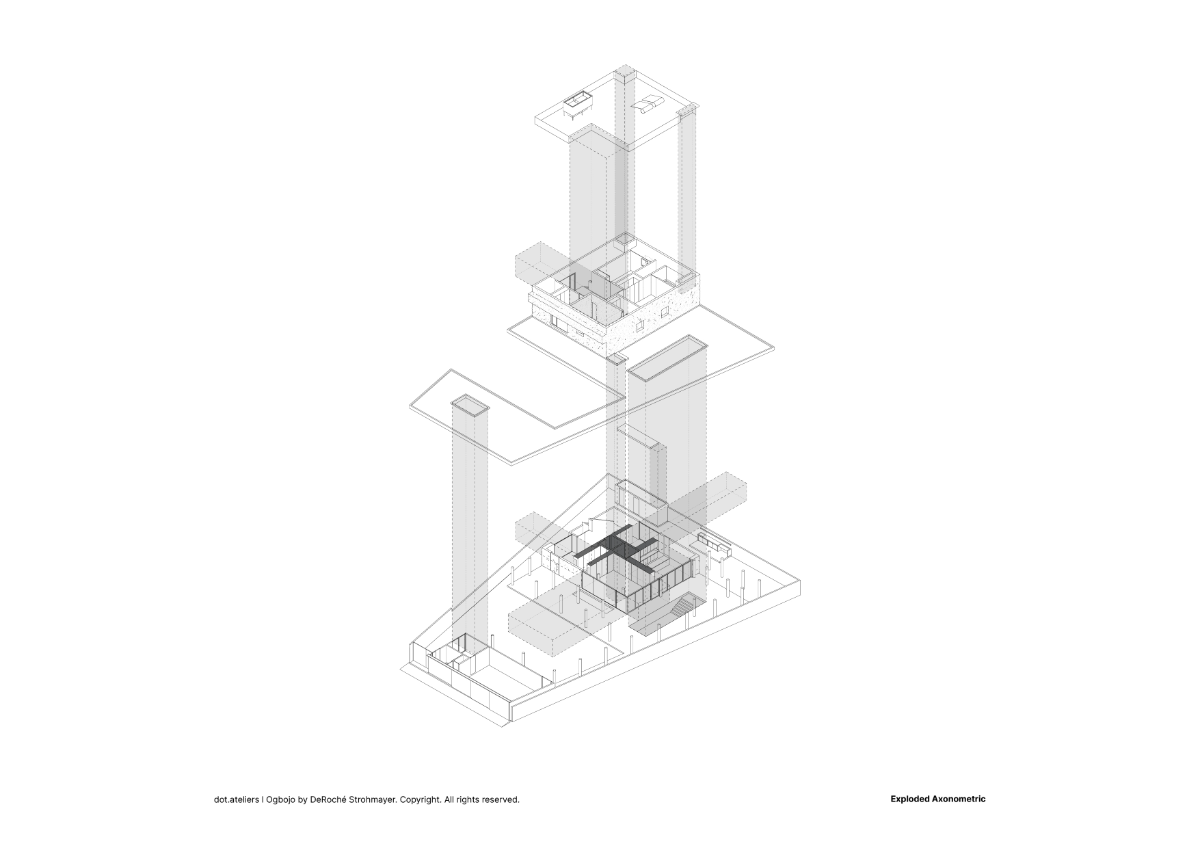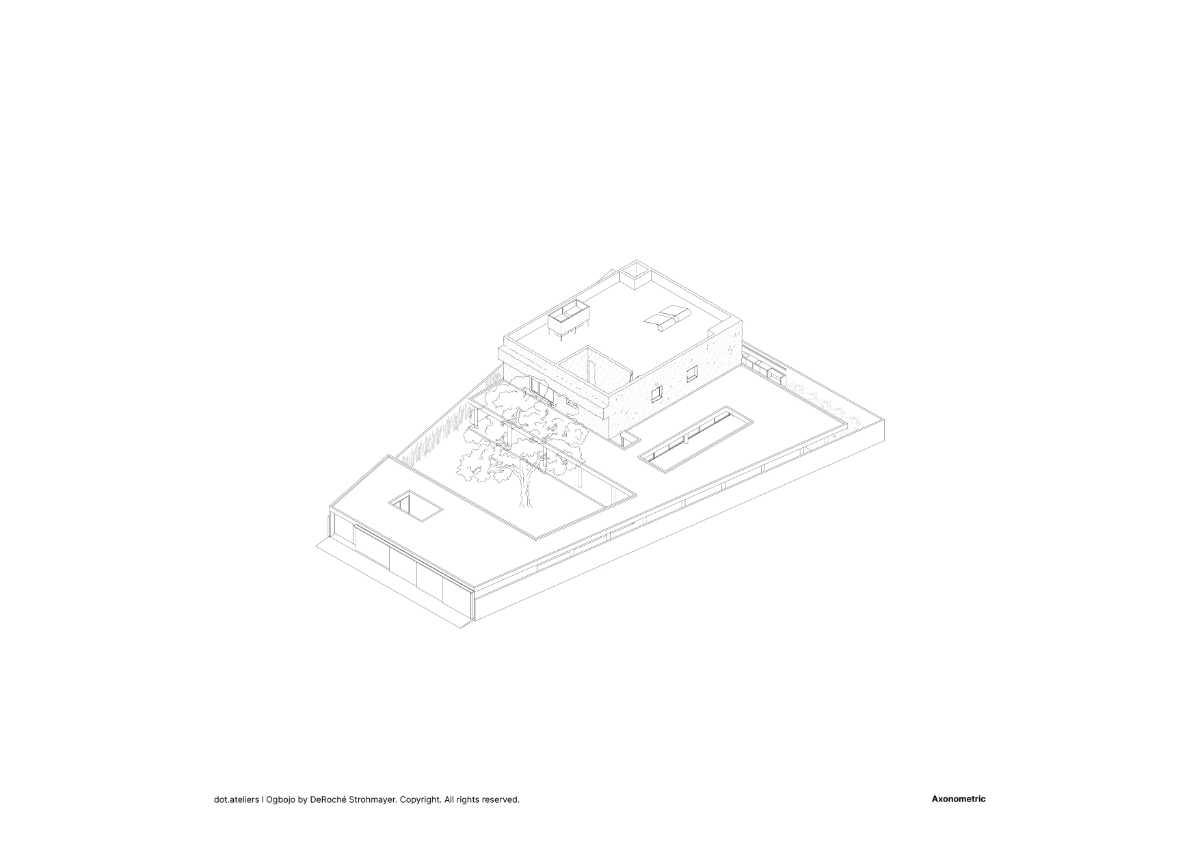A holistic vision for artistic production and reflection
Among the production-led artist residencies that have recently emerged across West Africa, dot.ateliers|Ogbojo in Accra, Ghana, has set itself apart by focusing on rest and reflection. This oasis located in the outskirts of the city combines living and informal collaborative workspaces with nature, contributing to a holistic approach toward creativity. This creative hub, initiated by the artist Amoako Boafo, is meant to be a place for invited intellectuals and artists to share a place to live, ponder and rest over the course of several months during the respective time they spend at this creative incubator.
Seamless articulation for contemplation and leisure
Designed to be a place of respite and regeneration, this adaptive reuse project is characterized by courtyards and voids on all scales, creating spaces of calm and varying levels of privacy within an otherwise heterogeneous, dynamic urban context. The architectural expression of dot.ateliers|Ogbojo balances the institutional and domestic characters of the brief through a strategic massing, lush pockets of vegetation, and refined finishes. The massing of the project keeps the existing building where it is, while a series of ancillary structures have been added to complete the programme. The old and new structures are tied together through lush gardens and a new canopy that promotes outdoor living in the tropics. The canopy also defines the central courtyard, which is used flexibly by the residents and guests for contemplation, leisure, and hosting large communal dinners for like-minded creatives and thinkers. The articulation of the interiors has been carefully crafted to allow for a seamless flow from room to room. Each room on the ground floor is framed by an external view – a picture window – of the many themed landscapes that surround the main building, allowing for continual connection to nature as one moves from the exterior to the interior. The existing two-story structure was retained, housing all of the communal programs, such as living, library, gym and kitchen on the ground floor and private, ensuite rooms on the first floor. The building not only frames views to the gardens, but also to the sky through a series of light shafts that permeate the building interiors and exteriors at various locations and depths, allowing for an abundance of light without any direct heat gain.
Comfort and refinement through sustainability
Although it is an adaptive reuse project, the building houses many passive sustainable strategies that help minimize heat gain, retain stormwater for irrigation, and it puts solar energy to use for the lights and water heaters. One of the main features that contributes to achieving moderate interior temperatures is the use of the new canopy. The canopy not only provides a covered walkway between the various buildings, but also acts as a light moderator, blocking direct heat gain from the sun wherever there is extensive glazing. All other windows openings, framing the views to the external gardens, are set back in a deep wall assembly, allowing for further reduction of heat gain. Large, operable openings also allow for a substantial amount of cross ventilation, reducing any energy consumption used for air conditioning. A locally produced, low-carbon concrete was used to cast all new concrete elements. A render version of this mix design was applied externally and finished using a rough-earth render method that echoes the artisanal earth-construction methods of Ghana. For the interiors, this low-carbon render was used to smoothly plaster the façade wall, while an interior wall liner was cladded with locally sourced walnut timber that reinforces the harmonious character of the spaces, as well as the holistic ideas of sustainability and beauty that have guided the project.

